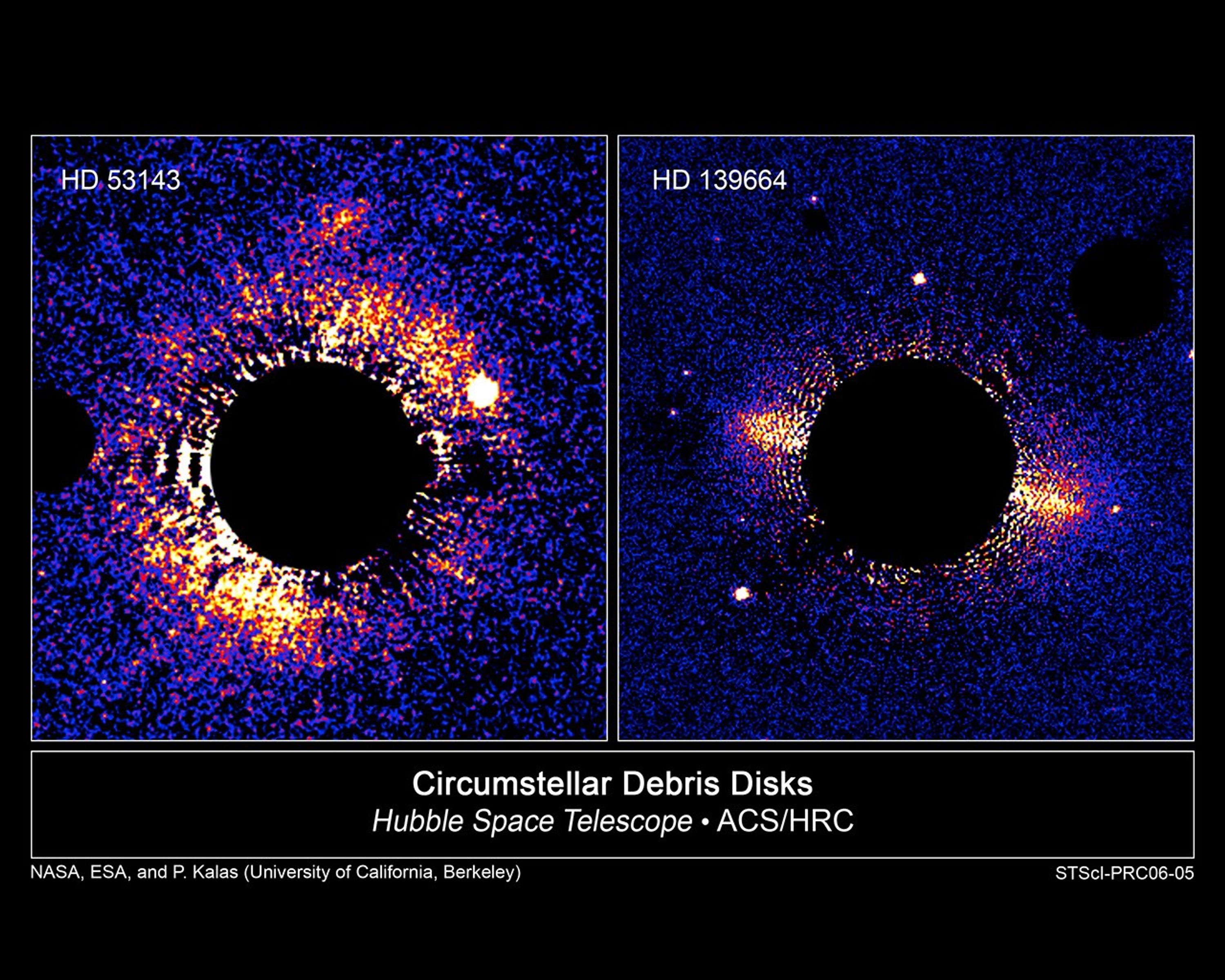1 min read
Circumstellar Debris Disk HD 53143

About the Object
- R.A. PositionR.A. PositionRight ascension – analogous to longitude – is one component of an object's position.06h 59m 59.55s
- Dec. PositionDec. PositionDeclination – analogous to latitude – is one component of an object's position.-61° 20' 8.99"
- ConstellationConstellationOne of 88 recognized regions of the celestial sphere in which the object appears.Carina
- DistanceDistanceThe physical distance from Earth to the astronomical object. Distances within our solar system are usually measured in Astronomical Units (AU). Distances between stars are usually measured in light-years. Interstellar distances can also be measured in parsecs.60 light-years (18.4 parsecs)
About the Data
- Data DescriptionData DescriptionProposal: A description of the observations, their scientific justification, and the links to the data available in the science archive.
Science Team: The astronomers who planned the observations and analyzed the data. "PI" refers to the Principal Investigator.The Hubble images were created from HST data from proposal 9475: P. Kalas (University of California, Berkeley), M. Clampin (NASA/GSFC), and J.R. Graham (University of California, Berkeley). - InstrumentInstrumentThe science instrument used to produce the data.HST>ACS/HRC
- Exposure DatesExposure DatesThe date(s) that the telescope made its observations and the total exposure time.September, 2004
- FiltersFiltersThe camera filters that were used in the science observations.F606W (V), F892W (Methane)
- Object NameObject NameA name or catalog number that astronomers use to identify an astronomical object.HD 53143
- Object DescriptionObject DescriptionThe type of astronomical object.Star with Disk, Circumstellar Debris Disk
- Release DateJanuary 19, 2006
- Science ReleaseDusty Planetary Disks Around Two Nearby Stars Resemble Our Kuiper Belt
- Credit

Compass and Scale
Compass and ScaleAn astronomical image with a scale that shows how large an object is on the sky, a compass that shows how the object is oriented on the sky, and the filters with which the image was made.
Related Images & Videos

Dusty Planetary Disks Around Two Nearby Stars Resemble Our Kuiper Belt
These two bright debris disks of ice and dust appear to be the equivalent of our own solar system's Kuiper Belt, a ring of icy rocks outside the orbit of Neptune and the source of short-period comets. The disks encircle the types of stars around which there could be habitable...
Share
Details
Last Updated
Aug 17, 2025
Contact
Media
Claire Andreoli
NASA’s Goddard Space Flight Center
Greenbelt, Maryland
claire.andreoli@nasa.gov





























